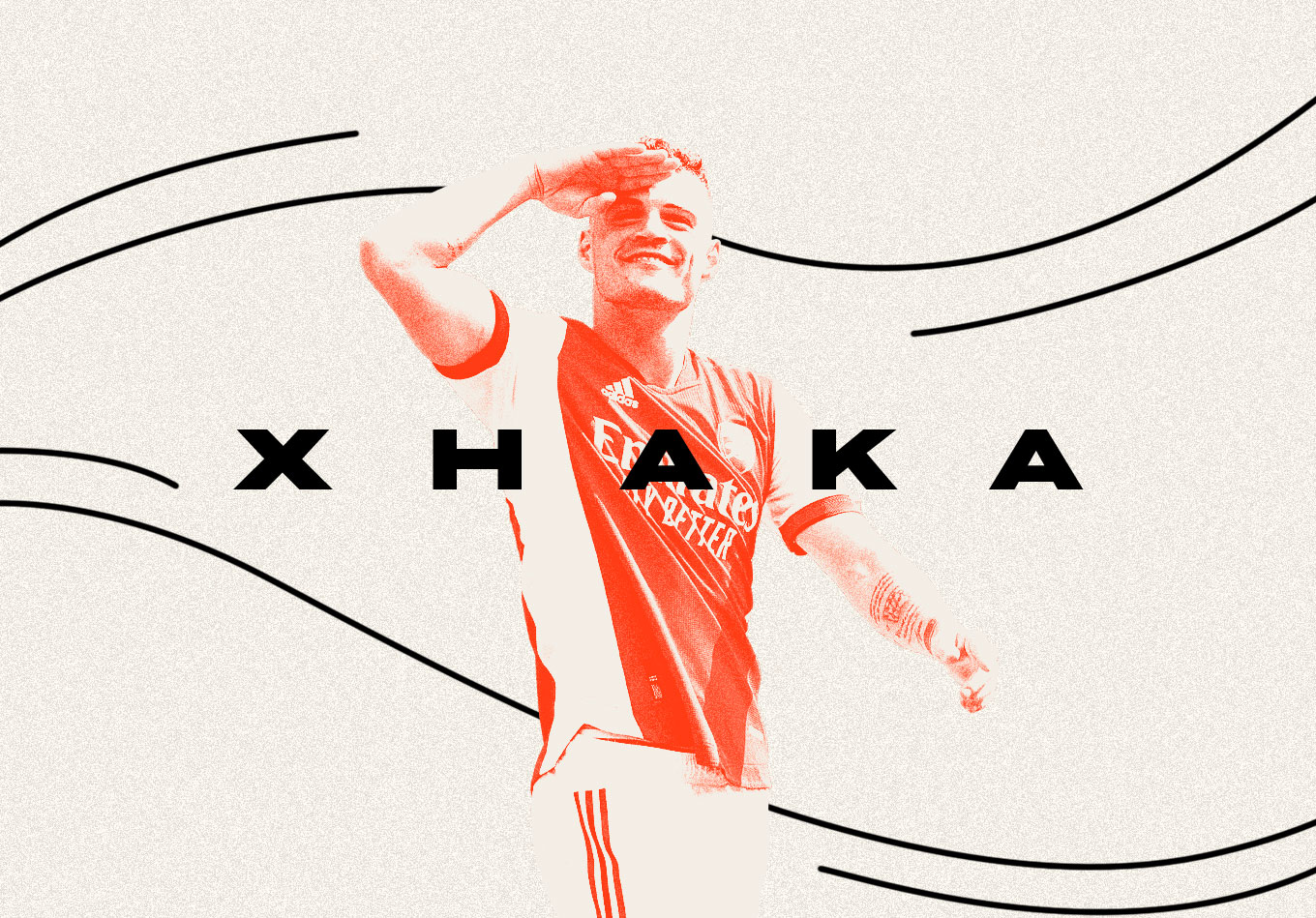Granit Xhaka’s Arsenal career has been worthy of its own Amazon documentary. To say his seven years at the club have been eventful would an understatement. From the highs of FA Cup triumphs to the lowest of lows and that incident against Crystal Palace, no player has greater epitomised the turbulence in Arsenal’s recent fortunes than the Swiss international.
As the curtains come down on another season at the Emirates, Arsenal have said goodbye to one of the few remaining players from the Wenger era. There was always going to be a sense of ‘what if’ on the final day of 2022-23 in a campaign that could have ended so differently for the Gunners. But their 5-0 evisceration of Wolves felt far from a dead rubber. It was a throwback to those summer nights, fast starts and free-flowing performances from the beginning of the campaign and Xhaka was at the heart of it all.
With his move to Bayer Leverkusen all but confirmed, we’ll take a look at the two sides of Xhaka, what made him such a divisive figure at Arsenal and how he managed to turn it all around, winning back the support of fans that once jeered him off. A footballing renaissance that was so close to having the perfect ending.
New Midfield Enforcer
In the summer of 2016, Xhaka became – at the time – Arsenal’s third most expensive signing behind only Mesut Özil and Alexis Sánchez. Following the retirement of Mikel Arteta, Mathieu Flamini’s departure, Jack Wilshere’s loan to Bournemouth and ongoing fitness issues to both Santi Cazorla and Aaron Ramsey, the Gunners needed to add depth in central midfield with Francis Coquelin and Mohamed Elneny widely viewed as back up options.
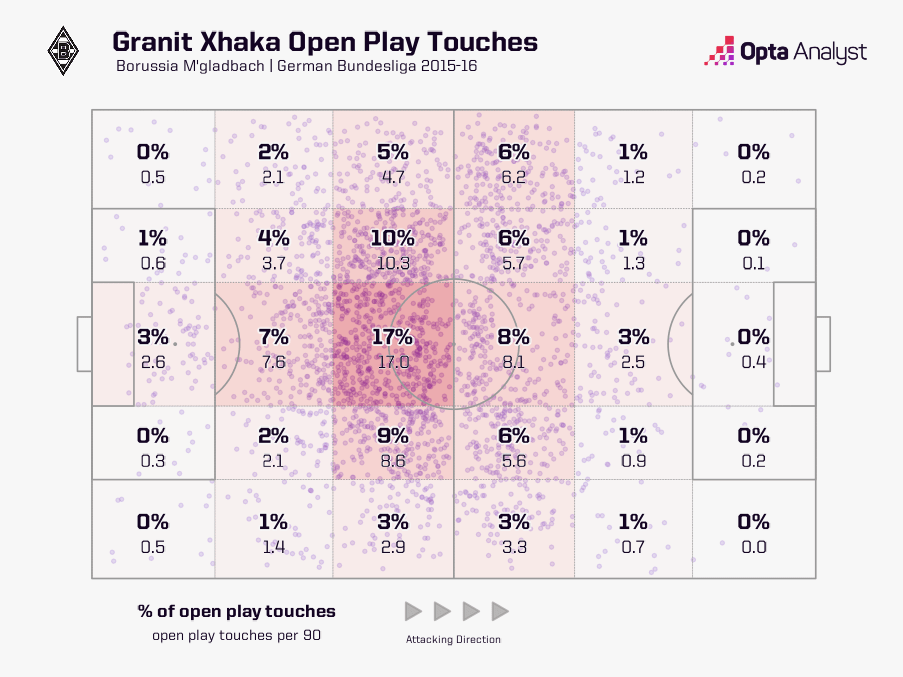
Despite links to N’Golo Kanté, who had just won the Premier League with Leicester, Arsène Wenger opted for a different profile at the base of his midfield. Xhaka was perceived by many as a deep-lying controller based on his performances at Borussia Mönchengladbach, but soon after signing him Wenger said:“I prefer Xhaka as a box-to-box midfielder, he has the stature, power and engine to make an impact with his runs.”
The Frenchman wasn’t wrong, but it took six years for those comments to come to fruition, with Xhaka spending the majority of his time in north London as a defensive midfielder, either as the lone anchor or in a double pivot, which often landed him in some tricky situations.
A Dark Past
While recency bias dictates this piece focuses on the resurgence of Xhaka, the elephant in the room has to be addressed. Prior to Mikel Arteta’s appointment as manager, the relationship between Xhaka and the Arsenal fans was a particularly volatile one. At one stage it seemed totally irreparable. And that wasn’t without reason. Lapses in concentration and moments of ill-discipline plagued his first six seasons at the club. These often cost Arsenal dearly, landing him with the reputation of a player that could be targeted on the ball and wound up off it.
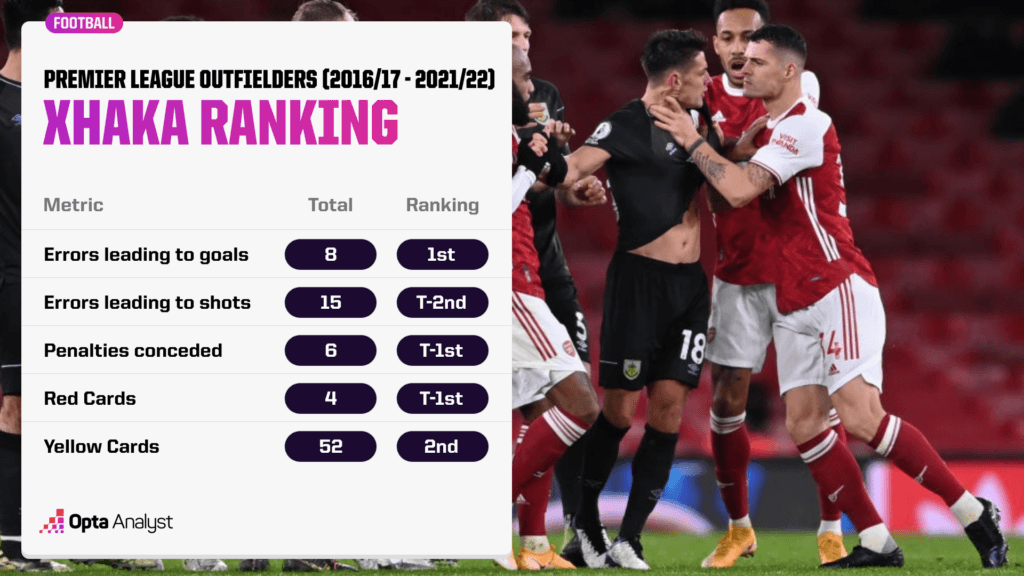
From joining the Gunners in 2016 to the end of 2021-22, Xhaka made more errors leading to opposition goals (eight) than any other outfield player in the Premier League, while no player was sent off (four) or conceded more penalties (six) than him during this period. For those that followed Xhaka closely during his time in Germany, this would have come as no surprise. In his last season in the Bundesliga, he gave away two penalties and was sent off three times.
Arsenal’s lack of a spine and physical presence at the time saw them earn the reputation of a side with a soft underbelly (as Troy Deeney so eloquently put it). On the surface, adding a young, aggressive, front-footed midfielder was exactly what the Gunners needed.
But as time progressed, the errors and losses of composure continued to resurface and became somewhat expected. Watching Xhaka was like watching a ticking time bomb. Counting down the games until his next blunder.
It wasn’t all doom and gloom during this period. Given the right set up around him, Xhaka was able to show his capabilities, playing a key role in Arsenal’s 2017 and 2020 FA Cup wins. In both finals, the Gunners set up with a back five (three centre-backs, two wing-backs) which provided more defensive stability and protection for Xhaka in a double pivot.
Crystal Palace in October 2019
Between those two FA Cup triumphs came one of the darkest moments of the Emirates era with Xhaka at the epicentre of it all. Friction between fans and the club had been escalating for weeks with results and performances under Unai Emery leaving a lot to be desired.
Having let a two-goal lead slip against Crystal Palace, Xhaka’s substitution on the hour mark was met with cheers from his own fans to which he responded with gestures of his own. This was more than just a tiff between player and fans. This was an indictment of where Arsenal were from top to bottom as a football club.
This was one of those moments, similar to Eric Cantona’s infamous outburst at Selhurst Park in 1995, that would go down in Premier League history for all the wrong reasons. The curse of Arsenal’s captain’s armband had struck again.
At the time, it was hard to imagine Xhaka ever playing for Arsenal again. The thought of him rebuilding his career at the club to a backdrop of fans singing his name was unthinkable…
Facilitator to Difference Maker
A number of Xhaka’s errors that led to goals had come via opposition pressure in the final third. Below are just two examples of Xhaka losing possession in deep central areas facing his own goal (both led to goals). Situations like this were commonplace even in Arteta’s early days in charge. Exposed, outnumbered and on the back foot.
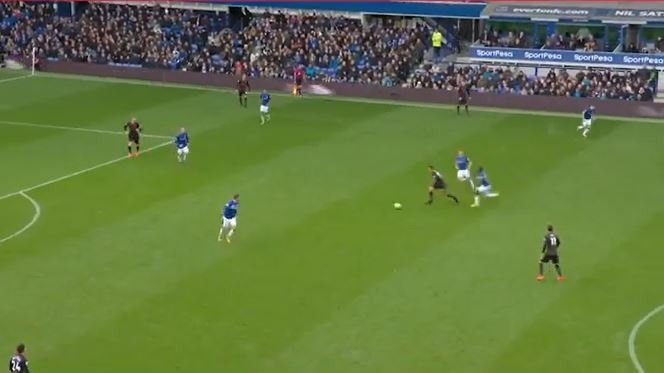
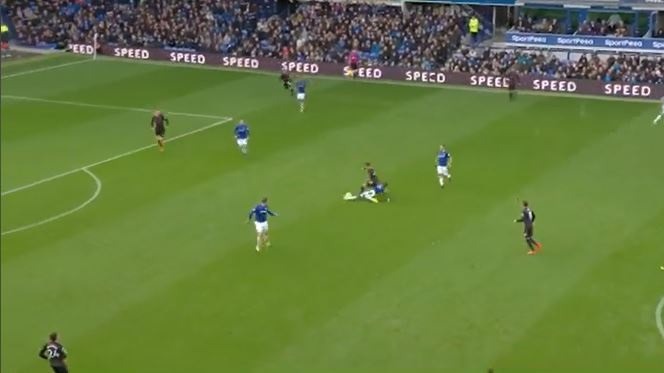
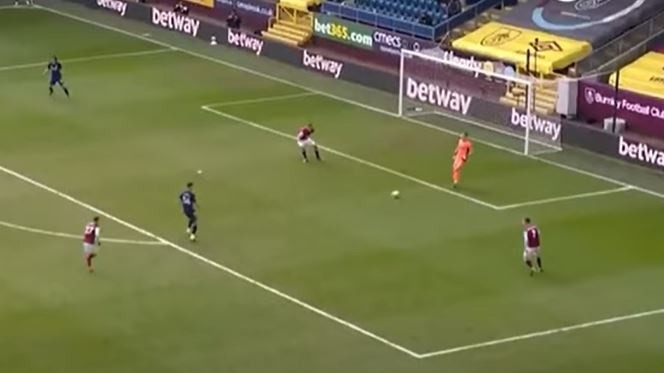
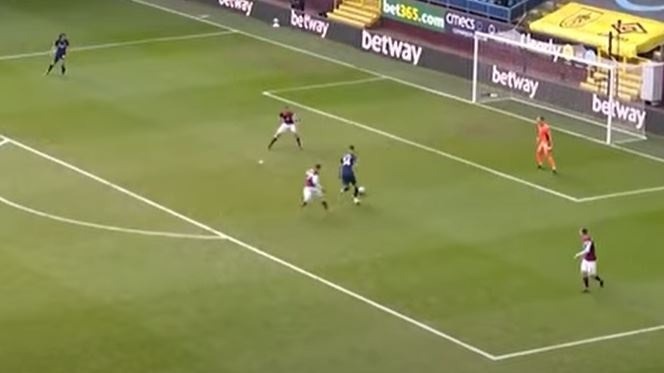
Cue the Arteta masterstroke. Following Oleksandr Zinchenko’s arrival, renowned for his ability to invert into central midfield, Arsenal now had the tools to adopt a 4-3-3 system heading into 2022-23, moving Xhaka from those deep central areas to a more advanced position on the left side of midfield.
The squad wanted to evolve to another level and be more dominant and have more resources in the final third to attack and to score more goals. He knew that if we wanted to take the team to a different level, we had to change his role. He knew that was coming.
Mikel Arteta regarding Granit Xhaka’s role.
Xhaka was tasked with increasing his attacking threat and making more telling contributions in the final third by his manager. But no one could have predicted the season he was about to have.
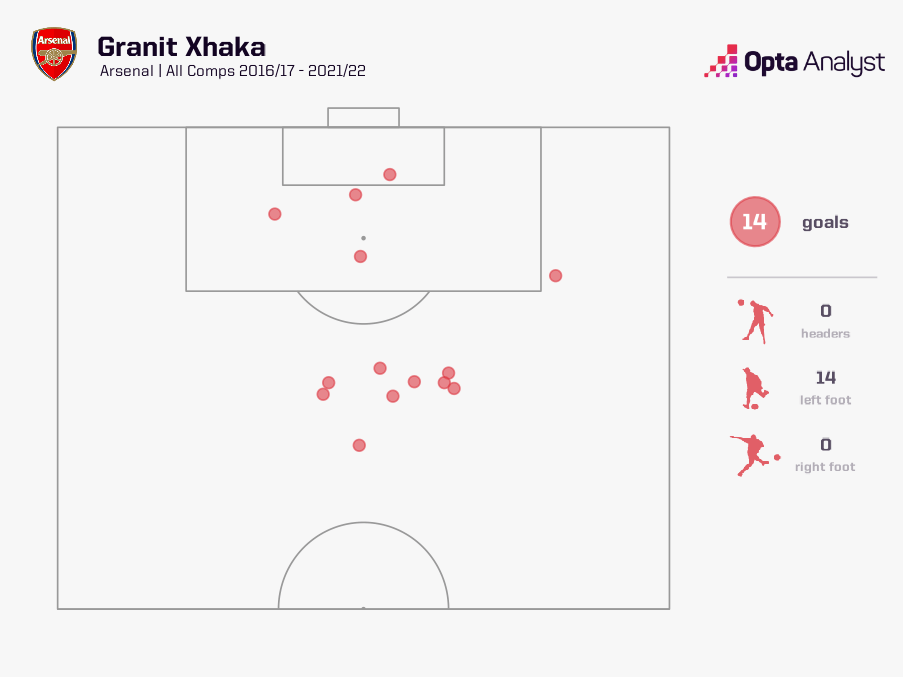
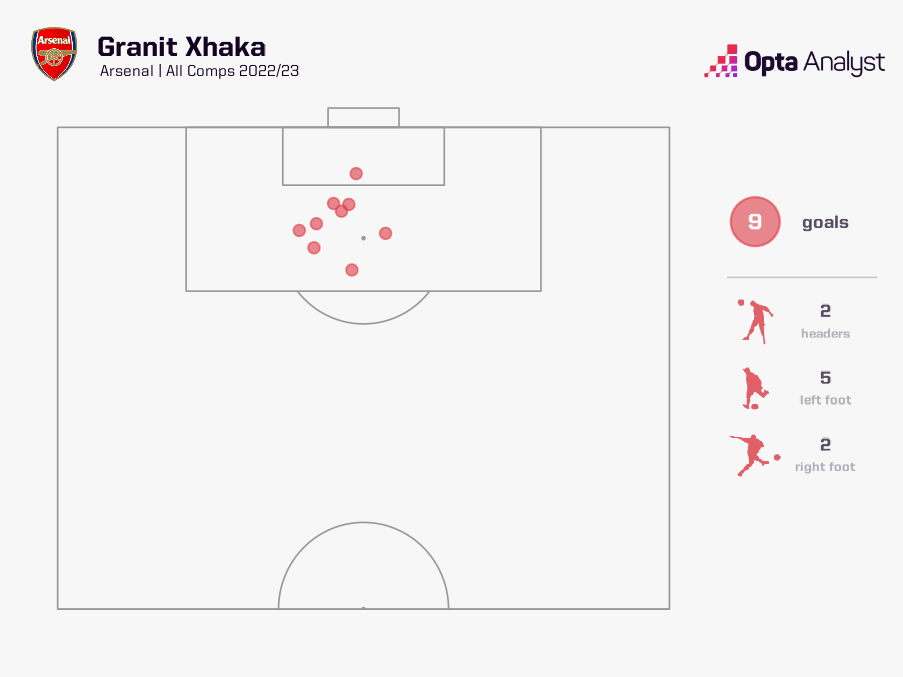
The Swiss international was involved in 16 goals last term (nine goals, seven assists), his highest tally in a single campaign. All nine of his goals were scored from inside the box after 10 of his first 14 goals for the Gunners come from outside the area.
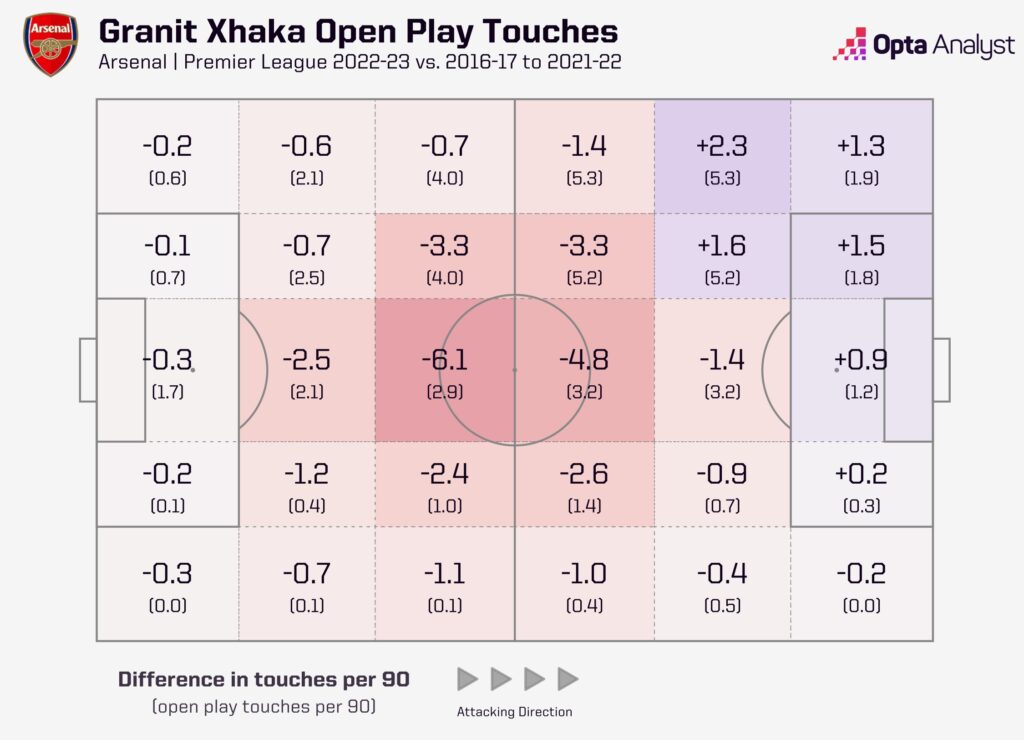
Xhaka averaged 59 touches per 90 minutes last season in the Premier League, a reduction of almost 50% (91 between 2016-17 – 2021-22). But he recorded 112 touches in the oppositions box (3.4 per 90), exactly the same figure as in his first six seasons at Arsenal combined.
Despite having less involvement in his sides overall build up, Xhaka’s late arrival in the box and third man runs saw Arsenal frequently create overloads on the left-hand side. It was a key feature of their blistering start to the season that resulted in nine wins from their first 10 games. Arteta was practising what Wenger had preached six years prior.
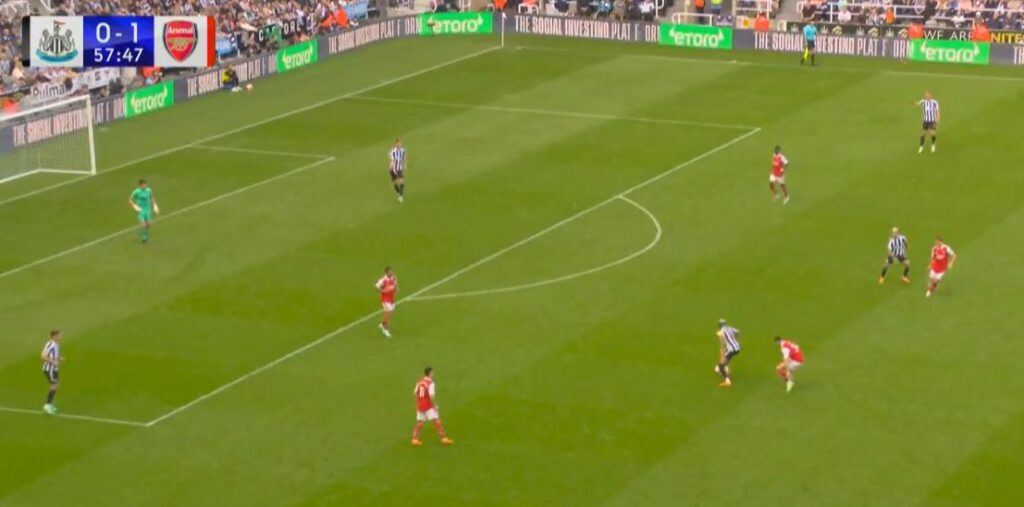
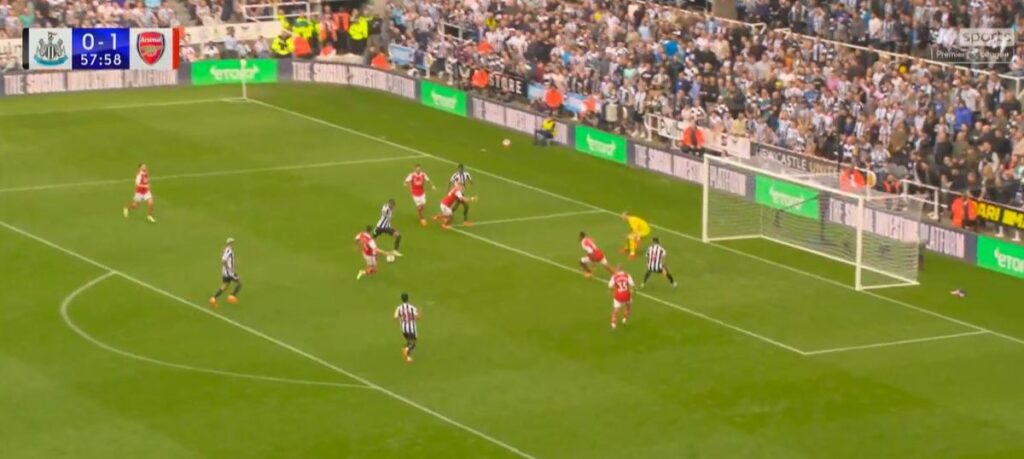
While there was a newfound emphasis on Xhaka’s attacking contributions, he didn’t lose sight of his defensive responsibilities. Arteta had spoken about Xhaka occupying spaces further up the field but having the physical capacity to recover during defensive transitions. It was a fine balancing act, but one the Swiss international demonstrated in Arsenal’s 2-0 victory at Newcastle. There were just 10 seconds between the two images above where Xhaka is pressing Joelinton in the final third and making a last-ditch block in his own penalty box to prevent a certain goal.
The narrative was starting to change. Much maligned and criticised by many sections of the media, Xhaka – for the first time in his Arsenal career – was starting to get widespread recognition for his performances.
A Manager’s Dream
He’s a special person. He’s very straight, he’s very honest, he’s very loyal and he’s very passionate about what he does. He’s made some mistakes and he’s learnt from them, always facing adversity and difficulty and never running away from it. This is what all managers want from their players. You know you can count on him, he will fight and break walls for you.
Mikel Arteta on Granit Xhaka
One of Xhaka’s outstanding attributes throughout his entire career has been his availability for selection. Since the start of 2016-17, only seven outfield players have racked up more Premier League minutes than him (18,701), featuring in 65 consecutive league games for the Gunners between March 2017 – December 2018.
He’s the only player to make 50+ appearances under each of the last three permanent Arsenal managers and while a lot has changed at the club in recent years, starting with the departure of Wenger, Xhaka was one of the few constants. He became an integral part of the squad and an important pillar in this young team Arteta has managed to assemble. He may not have always been perfect, but he was certainly present.
With or without the captain’s armband, Xhaka remained a leader, focusing his teammates in the good times and standing up to be counted in the bad ones. Team huddles after Arsenal goals became a frequent sight in 2022-23 with Xhaka playing the orchestrator, while following Arsenal’s humbling defeat at St James’ Park at the end of 2021-22 – which saw them fail to qualify for the Champions League – he was the one that stood up to face the media and didn’t hold back.
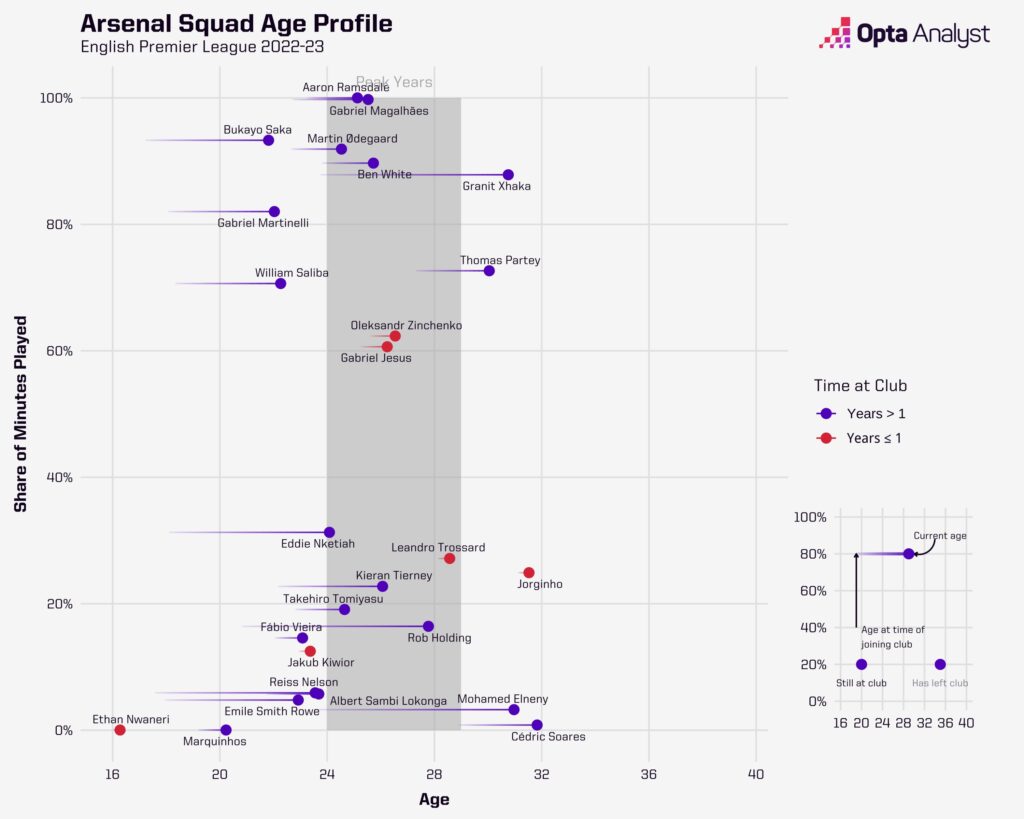
Fast forward a year and the disappointment isn’t for missing out on Champions League qualification but missing out on the title. Arsenal averaged the second youngest starting XI in the Premier League last term (25y 52d), with Xhaka the only player over 30 to register any sort of significant minutes. His influence on the team was clear for all to see and reached an all-time high in 2022-23, acting as a safety net for Arsenal’s young talent to flourish.
The only two Premier League games Xhaka failed to start last season saw the Gunners concede within nine seconds against Bournemouth and 27 seconds against Southampton, their two most chaotic games of the campaign, where his character and presence from the start would have been valuable.
Bowing Out in Style
Against Wolves, in his last game in an Arsenal shirt, Xhaka’s redemption arc was complete.
He became the first player to score two or more goals in his final appearance for Arsenal since Tommy Baldwin in September 1966, and exited the pitch to cries of “we want you to stay”.
Xhaka has been a symbol of this new era at Arsenal. No player has embodied Arteta’s ‘non-negotiables’ quite like the Swiss international. Through sheer determination and persistence, he was able to rewrite his own legacy at the club.
Who were the most similar players to Granit Xhaka across 2022-23? You can find this out, plus analyse thousands of other players in the new Opta Player Comparison tool.
Enjoy this? Subscribe to our mailing list to receive exclusive weekly content. And follow us on Twitter too.
